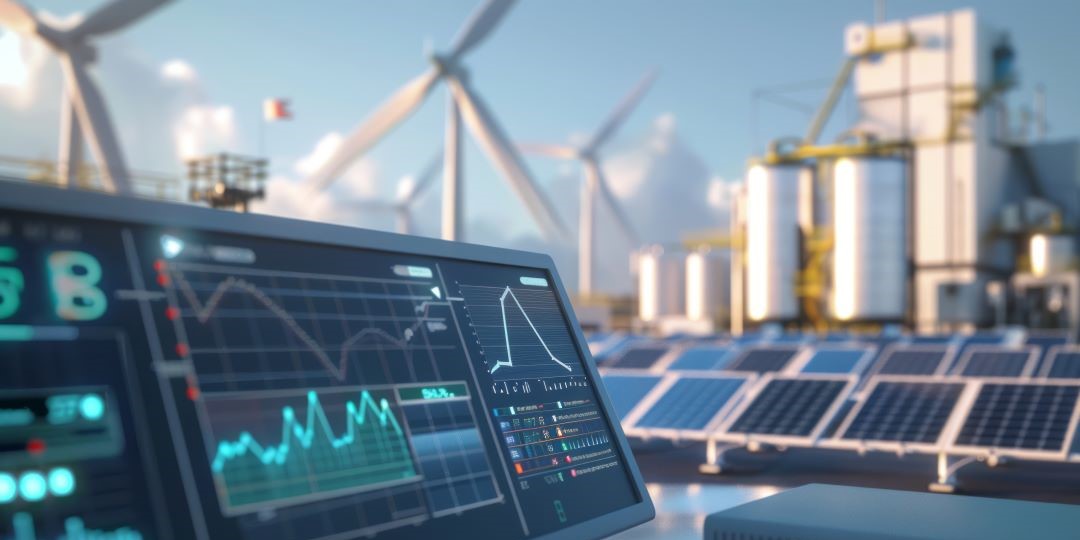By Josh Brantley, NERC Reliability Specialist
In an era where technology touches every facet of our lives, the energy sector stands on the brink of a monumental transformation. Digitalization, characterized by the integration of digital technologies into everyday processes, is set to revolutionize how we produce, distribute, and consume energy. This transformation is driven by the convergence of advancements in artificial intelligence (AI), the Internet of Things (IoT), blockchain, and big data analytics, alongside a growing environmental consciousness and the pursuit of economic efficiency.
The Catalysts for Change
The push towards digitalization in the energy sector is fueled by several key drivers. Technological advances, for instance, have made it possible to implement sophisticated data analytics, AI, and IoT solutions that optimize energy production and consumption. Environmental concerns, particularly the need to combat climate change, necessitate a shift towards more sustainable and efficient energy systems. Economically, digitalization offers the promise of cost savings and efficiency improvements, making it an attractive proposition for businesses and consumers alike.
Digitalization at Work: Revolutionizing the Energy Landscape
One of the most visible impacts of digitalization is the advent of smart grids and smart meters. These technologies enable a more efficient and reliable delivery of electricity, allowing for real-time monitoring and management of energy flows. They also pave the way for greater energy conservation and reduced carbon emissions, by optimizing the balance between energy supply and demand.
The integration of renewable energy sources into the grid is another area where digital technologies shine. Digital tools help manage the inherent variability of wind and solar power, ensuring a steady and reliable energy supply. This is crucial for reducing dependency on fossil fuels and moving towards a more sustainable energy future.
Furthermore, digitalization enhances energy storage solutions, improving their efficiency and capacity. This development is vital for addressing the challenge of storing excess energy generated from renewable sources, thereby ensuring its availability during periods of low production.
On the consumer front, digital platforms and IoT devices empower individuals to monitor their energy usage in real-time, participate in demand response programs, and make more informed decisions about their energy consumption. This not only leads to cost savings for the consumer but also contributes to the overall efficiency of the energy system.
Navigating the Challenges
However, the road to a fully digitalized energy sector is not without its challenges. Cybersecurity emerges as a significant concern, with the increased connectivity of energy systems raising the stakes for potential cyberattacks. Ensuring the privacy and security of consumer data is another critical issue that must be addressed as we collect and analyze vast amounts of information.
Moreover, the digital divide poses a threat to equitable access to the benefits of digitalization, particularly in less developed regions. Bridging this gap requires concerted efforts to extend digital infrastructure and capabilities across all communities.
Cybersecurity Risks: Integrating IoT devices increases vulnerabilities to cyberattacks. Mitigation requires advanced cybersecurity measures, industry-wide standards, and robust protocols to protect the energy infrastructure.
Data Privacy Concerns: The vast collection of data raises privacy issues. Solutions include transparent data handling practices, stringent protection policies, and leveraging blockchain for secure data management.
The Digital Divide: Ensuring equitable access to digital technologies is essential. Bridging the gap involves expanding digital infrastructure, offering digital literacy programs, and making technology accessible to underserved communities.
Real-World Examples and the Path Forward
Several countries and companies are at the forefront of the digital energy revolution. For instance, Denmark’s integration of digital technologies in its energy systems has made it a global leader in renewable energy usage and efficiency. These examples provide valuable lessons on the benefits and challenges of digitalization in the energy sector:
Smart Grids
Denmark has invested heavily in smart grid technologies, which allow for more flexible and efficient management of the electricity network. These smart grids utilize digital communication technology to monitor energy flow and adjust in real time to changing energy demands and supply, especially from renewable sources like wind and solar power.
Wind Energy Integration
A world leader in wind energy, Denmark uses digital technologies to optimize the integration of wind power into its national grid. This includes sophisticated forecasting models to predict wind power production and advanced control systems to adjust the operation of turbines based on real-time data.
In conclusion, the impact of digitalization on the energy sector is profound and far-reaching. It promises to make energy systems more efficient, sustainable, and responsive to consumer needs. However, realizing this potential fully demands ongoing innovation, robust regulatory frameworks, and collaborative efforts among all stakeholders. As we continue to navigate this digital transformation, it is imperative that we remain vigilant to the challenges and committed to leveraging technology for a cleaner, more sustainable energy future.











